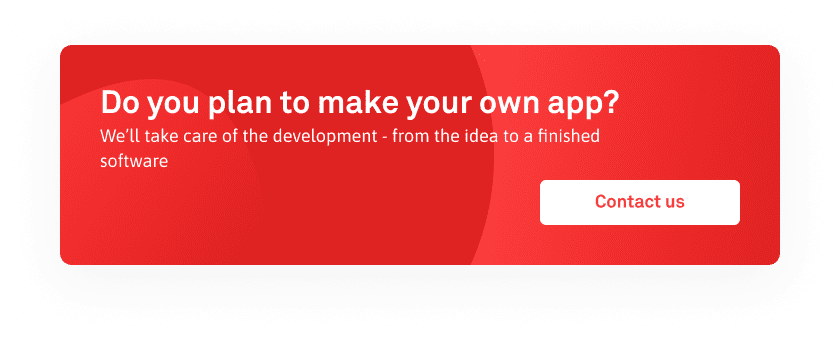When developing software, there’s nothing more important to the success of your project than Agile software development. It’s a term that gets thrown around a lot in the development industry, but is one of the most misunderstood terms for consumers and clients.
When most people hear the phrase ‘Agile software development,’ they either think it’s a piece of technology that helps with developing software or a company that develops software. Contrary to popular belief, it’s neither one.
So, what is Agile software development?
Agile software development is a methodology. Most people call it ‘Agile.’ It’s a highly effective way of building software that allows developers to quickly and accurately respond to changes throughout the process.
A group of 17 software developers created agile in 2000. They wanted to come together and find a solution for bringing new software to the market quicker. And without losing the quality of the project.
The Agile software developers included Jeff Sutherland, Bob Martin, Martin Fowler, Jon Kern, Jim Highsmith, and Ken Schwaber, ended up creating the Agile Manifesto. It’s a set of principles and approaches for Agile software development. The manifesto listed a set of 12 principles that must are essential to Agile software development.
- Customer is the focus through early and consistent delivery of value.
- Don’t fear changes to the product, even late in development, if you’re adding value for the customer.
- New delivery of software should occur every few weeks or months, emphasizing shorter timescales.
- Teamwork is essential throughout the software’s existence.
- Keep developers motivated by giving them the support, environment, and resources they need.
- Put a strong preference over face-to-face communication when developing software.
- The primary measure of success when building software is working software.
- Agile supports a sustainable process that allows the entire team to maintain consistent progress.
- Good design and technical excellence are at the core of moving with agility.
- Simplicity is key when using Agile methodologies.
- Success is earned through self-organization throughout your team and in different departments.
- Regular reassessments of your strategies are essential to Agile development.
Agile software development doesn’t work unless you have a team that communicates without disruption and stays on schedule — no matter what obstacles they would face. When everything runs smoothly, and everyone’s doing their part, Agile development is beyond effective.
Why trust Agile software development?
There are many reasons why Agile software development is among the most popular approaches to building software. It’s an approach designed by developers, yet designed for the user’s benefit.
We’re going to discuss some of the major benefits that come with Agile development. Plus, why you should consider a developer that utilizes it for their projects. Let’s take a look:
- Quality – due to the ongoing testing and quick changes, you can effectively deliver a quality product to your users.
- Teamwork – Agile is designed to bring your entire team together throughout the development process.
- Transparency – there will never be any confusion about who should be working on what, when something should be due, and what the direction is moving forward.
- Time – not only are your timetables more predictable, but you’ll be able to deliver a product much quicker than normal.
- Change-Resistant – if you need something changed mid-way through the development, Agile allows for a smooth recovery.
I know most methodologies say, “Slow and steady wins the race.” With Agile software development, it’s more a matter of, “Smart and steady wins the race.” Your users will notice the difference, and your competitors will be wondering what they’re doing wrong.
Understanding the Different Agile Methodologies
When looking at Agile software development, it’s more of an umbrella term for various methodologies. All of them have evolved over the past two decades. Some approaches will work better than others, but it will largely depend on your unique project.
Let’s look at some of the most popular methods that fall under the ‘Agile’ network of methods. They include Scrum, Lean, Kanban, and Extreme Programming (XP).
Scrum
Scrum is one of the more popular and most-used Agile frameworks – and for a good reason, too. As much as it focuses on simplicity, Scrum is a difficult framework to master. That’s why finding a developer that knows Scrum like the back of their hand is a rare find.
With Scrum, the scrum master will work with the product owner to provide a backlog of tasks that need to be completed. The list will be prioritized and sent out to the development team, who work in series called ‘sprints.’ Each sprint is generally one to four weeks worth of work – usually on the shorter side.
A daily 15-minute meeting with the team is necessary to effectively go over progress and reassess what the future holds for the software. Once a sprint has come to an end, a sprint review is held with the product owner and shareholders to go over progress. The development team will also meet to go over how they can improve to make the next sprint even more successful.
Lean
When most people hear the term ‘Lean’ in Agile methodology, they associate it with eliminating any excess waste that your product carries. They envision keeping it lean by minimizing the “fat” of the product. While this is somewhat true, Lean development is much more than that.
With Lean development, the main concept is continuous improvement. To achieve this, your team needs to change their mindset and become a “learning organization.” This means you’re learning what the users want as you go, making the necessary improvements, and then reassessing.
While Scrum is about visualizing the task boards and structuring the team, Lean focuses on making sure every last bit of the product provides value to the customer. If it doesn’t add value, it doesn’t hold any weight and does not belong to the project.
Kanban
Kanban, was originally used in manufacturing, and was created by a Toyota engineer. It is similar to the other two methodologies in that it focuses on delivering quality and value. Kanban’s main concept is focus – making sure there isn’t a surplus or tasks on the team’s plate.
Using Kanban cards and Kanban boards allows the team to stay organized by visualizing what’s on the to-do list. The person managing the cards will ensure there aren’t too many cards on one department’s list.
Kanban also emphasizes pulling in work, compared to pushing it out. This helps limit the amount of work in the “Work in Progress” list and increases the quality because team members are more focused on their individual tasks.
Extreme Programming
One of the most specific methodologies found in the Agile network, Extreme Programming (XP) values five major things – communication, simplicity, feedback, courage, and respect. These are very similar to that of Scrum, but focuses more on providing an environment that suits the development team.
The 12 practices involved in Extreme Programming are meeting face-to-face, teamwork, transparency, focus, pair programming, building buyer personas, weekly reviews, quarterly reviews, prioritizing, automation, continuous integration, testing first, and incremental design.
When you combine these 12 practices together, you get Extreme Programming – something that takes programming to the next level.
Does Your Developer Use Agile?
When going through the hiring and interview process for an Agile software developer, you’ll want to understand how they plan on bringing your software to life. Knowing their process will give you a better sense of whether you can trust them.
Before you hire someone, ask them what their methods are throughout the development process. Better yet, ask them if they know and understand what Agile is. Now that you have a better idea of what it is, you’ll be able to spot whether your potential developers are bluffing or not.
At Code Bright, we love using Agile methodologies in our development process. It helps us keep things organized, allows us to provide the user with more value, and helps us turn our client’s idea into a masterpiece. If you’re ready to get started with your project, contact us today!
Photo by İrfan Simsar on Unsplash



